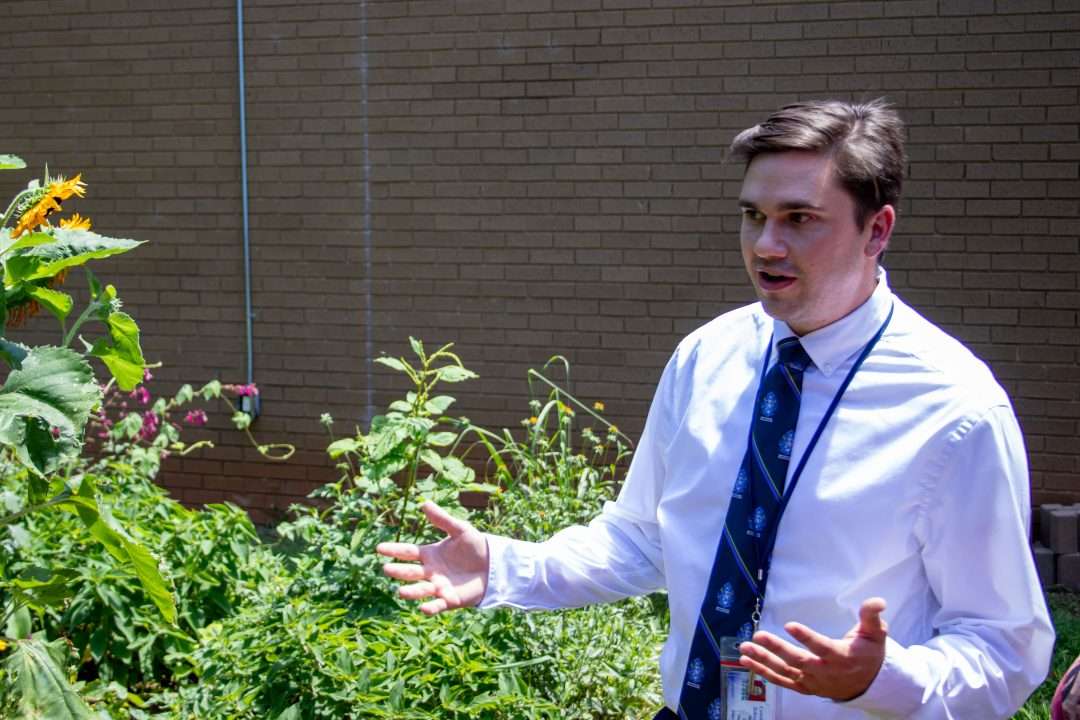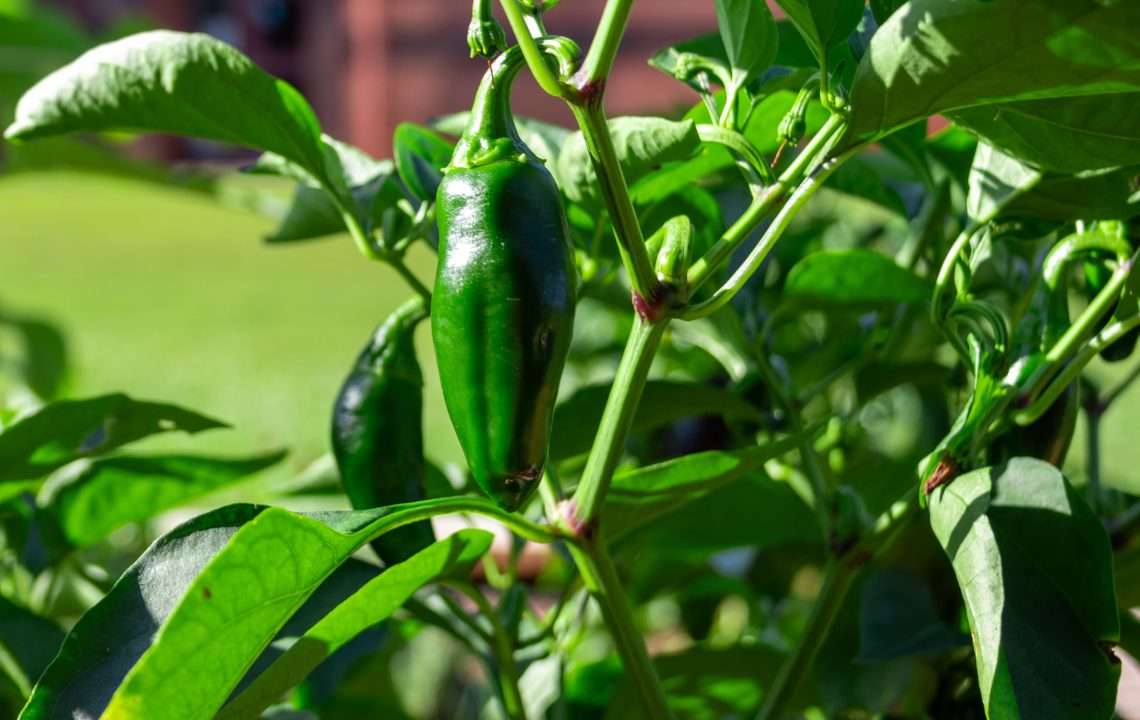
On the day before school starts in Coweta County, the sun beats down and humid breezes sweep across some new structures at two schools. Designed by students themselves and constructed by volunteers from local businesses, vegetable and pollinator gardens bask in the heat, their vines sprawling and loaded with fruit, their various blooms coloring every nook and cranny. And every square inch of these raised garden beds holds lessons for students – and even teachers – can learn.
Page Beckwith with Keep Newnan Beautiful shares that it’s important to empower schools by providing the resources and labor connections they need to initiate and sustain these ever-evolving projects. Thomas Crossroads Elementary in Sharpsburg and Evans Middle School in Newnan were two of those schools who experienced what coming together really looks like.
TCE teachers Erin Gladden, Lisa Rustick, and Mandi Lodge, along with Principal Letitia Crosby express their excitement anticipating their students’ reactions to how their school garden has changed over the summer.
“We wanted the garden to be a living outdoor classroom for students to explore the world around them and to truly get “down and dirty” when it comes to conducting experiments. I believe that this is the best opportunity to provide our students with hands-on learning of the curriculum and a way for them to apply knowledge to real world problems”, says Principal Crosby.
“I’m looking forward to seeing them view the fruits of their labor!” Gladden shares.
TCE’s gardens, constructed just this past March, have gone from empty to overflowing during the past five months. After careful planning with the students and teachers who researched and measured everything out, Beckwith connected the school with Publix volunteers to help with the project. Within weeks the raised garden beds stood in the school yard with various seeds and seedlings nestled in the compost-rich soil.
“The children picked their plants based on the activities they want to do this year,” Lodge explains. “They wanted to make a pizza, so we made a pizza garden!”
Rustic adds that not only do the students learn how the plants work, but they are also able to put their arithmetic skills to good use.
“They use fractions when measuring ingredients and calculating serving sizes,” she indicates.

At this point in the summer, tomatoes, basil, rosemary, and even Japanese eggplant had already started bearing their fruits. A pumpkin plant had also sprawled out of the raised bed and onto the grass.
“That was an accident,” 4th grade student Valentina Tzilianos observes. “But I’m excited to see if it makes any pumpkins!”
Tzilianos and her mother, Cynthia, have been caring for the gardens throughout the summer so the students’ hard work doesn’t go to waste. Cynthia even had an irrigation system installed so the vegetables stay hydrated through the dry spells.
Beckwith points out that the garden projects involve so many moving parts and dedicated people like Cynthia and Valentina. Without all those people who care and who have the time and resources to help, these projects wouldn’t be possible.
“And that’s the goal, to give these types of experiences to all the kids in our district,” Science Content Specialist Donald White states. “The students gather so many life lessons in the garden. Not only is taking care of it educational, but it’s fun!”
Resonating with that, Valentina picks a cherry tomato from one of the many fruiting vines and pops it into her mouth.
“Nature’s candy,” she smiles.
About ten miles west at Evans Middle School, 6th grade math teacher Hunter Lee ogles over the progress his school’s garden has made over the summer break. Unlike the Thomas Crossroads garden, EMS’ garden focuses more on form and function – teaching students the importance of individual ecosystem components and what animals or insects rely on certain plants to survive.
Beckwith and Lee began plotting the EMS garden project back in January of this year and had everything mapped out, organized, built, and planted by April, which goes to show that the resources and energy behind these projects exist and are just waiting for the initiative to take place.
Filled with both tropical and native plants, EMS’ four raised beds contain everything from sunflowers to pale purple coneflower to salvias. Lee shares there are so many standards that can be met here, especially those of Life Science Ecosystems and even math.
“My hope is to inspire students to do these activities at home,” Lee says. “There’s so much to learn here, anything from the co-evolution of milkweed and butterflies to space permanence to learning that a tree like the white oak supports about five hundred species.”

Lee has already incorporated several unique features in the garden with the help of his students last year. For instance, he and the students collaborated to make a type of sensory garden in one of the four beds – including plants that smell, look, grow, and feel differently from each other. Herbs, succulents, and various blooms intermingle to create a beautifully chaotic, but calming, experience.
Lee partners with EMS art teacher Chad Loftin in taking garden lessons one step further. Last spring, the pair decided to run a pollination experiment with artificial flora and fauna adaptations. The question the students had to answer was “Can we replace pollinators with drones?” Utilizing their research skills, students in Lee’s classes last school year picked pollinators and flowers to model for their experiment. The students then took their ideas to Loftin’s art class to design and shape their artificial pollinators and the flowers.
Lee, Loftin, and White chuckled when they remembered that the kids used everything from colored flour to Cheeto residue to dust their flowers with.
The experiment culminated with a showdown in the upstairs hallway. Students lined up their pollen-laden flower structures, then flew their quadcopter drones – equipped with anything from pipe cleaners to paintbrushes – over their flowers. Before words even came to their mouths, the teachers’ wide grins gave away how fun and exciting the experiment ended up being.
White adds that the partnership between the teachers and with the natural world is key to creating a wholesome learning environment for everyone. It’s an added bonus that the garden is cross-curricular.
“At the end of the day, the kids aren’t going to remember the worksheets. They’re going to remember how connected they felt to their peers, teachers, and environment.”
Enriching schools with gardens is made possible with community support, parent involvement, and a teacher’s passion. Check out Keep Newnan Beautiful on their website or on their Facebook page. The organization frequently posts about different events where you can lend your support. Who knows? You may find yourself inspired to make your own little garden.





